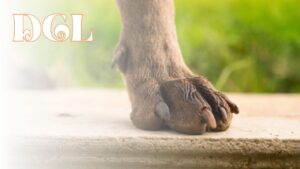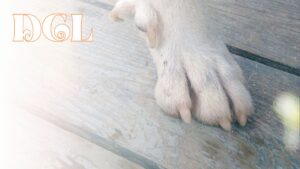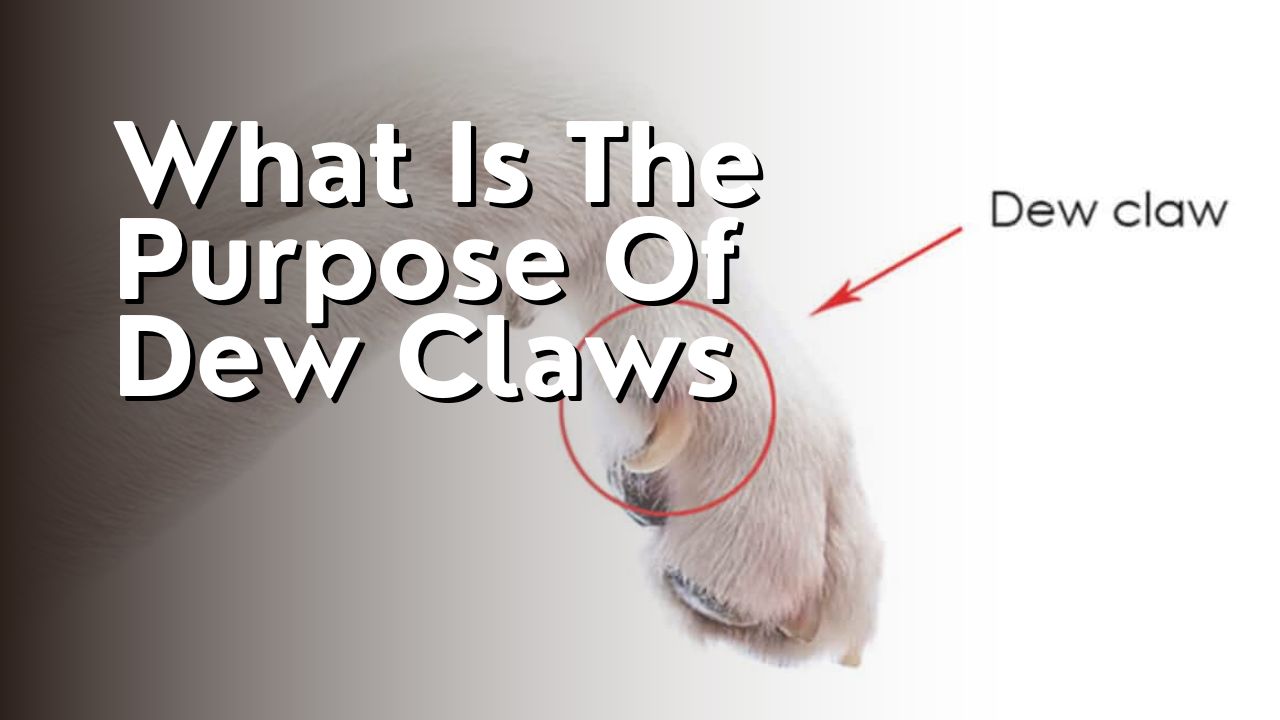I’ve always been curious about the purpose of dew claws on dogs. What are they for? Why do some dogs have them while others don’t? These questions have been on my mind for a while, so I decided to do some research and find out the answers.
In this article, I will be exploring the fascinating world of dew claws. We’ll delve into their evolutionary history, uncover their function and benefits, and discover how different dog breeds utilize them. Additionally, we’ll discuss the important topic of dew claw care and considerations for dog owners.
So, if you’ve ever wondered about the purpose of dew claws or if you’re a dog owner looking to learn more, you’ve come to the right place. Let’s dive in and unravel the mystery of dew claws together.
An Introduction to Dew Claws
Did you know that dew claws, those seemingly useless appendages on your dog’s paws, actually serve a vital purpose in their evolutionary history?
Dew claws are the small, extra toes located higher up on the inside of a dog’s front legs. While some dogs may have dewclaws on their hind legs as well, it is more common to find them on the front legs.
The purpose of dew claws can be traced back to the early ancestors of dogs, such as wolves. These claws were once functional digits that helped them climb and grip surfaces, like tree trunks or rocky terrains. As dogs evolved and adapted to different environments, their need for dew claws diminished. However, the dew claws remained a remnant of their evolutionary past.
In modern dogs, dew claws may not serve a critical purpose, but they can still have some benefits. For instance, some dogs use their dew claws to hold onto objects, like toys or bones, while they chew. Additionally, dew claws can provide stability during quick turns or when running on uneven terrain. In certain breeds, like the Great Pyrenees or Saint Bernard, dew claws are considered important for their job of providing stability and traction in snowy or icy conditions.
So, the next time you see your dog’s dew claws, remember that they may have lost their original purpose, but they still play a small role in their overall functionality and evolutionary history.

The Evolutionary History of Dew Claws
While examining the evolutionary lineage of certain mammalian species, it becomes evident that the presence of small appendages on the inner side of the limbs has served as a fascinating area of study. These small appendages, known as dew claws, have a complex evolutionary history that can be traced back to the early ancestors of modern mammals.
Here are three key points that shed light on the evolution of dew claws:
- Ancestral Function: Dew claws are believed to have originated as functional digits that were used by early mammals for climbing trees or grasping prey. They provided an additional point of contact with the environment, enhancing the animal’s ability to maneuver and secure its position.
- Reduction and Loss: Over time, as mammals evolved and adapted to different environments, the need for dew claws diminished. Some species underwent reductions in their dew claws, while others lost them completely. This reduction or loss can be attributed to changes in habitat, locomotion, or the development of more specialized adaptations.
- Vestigial Structures: In many modern mammalian species, dew claws are considered vestigial structures. They no longer serve a functional purpose and are often smaller and less developed than the primary digits. However, they can still be found in various animals, including dogs, cats, and some hoofed mammals.
Understanding the evolutionary history of dew claws provides valuable insights into the adaptations and changes that mammals have undergone over millions of years. It highlights the dynamic nature of evolution and the diverse range of structures that have evolved in response to different environmental pressures.
The Function and Benefits of Dew Claws
Dewclaws, although often considered vestigial, actually serve important functions in various animals. These extra digits are found on the wrists or ankles of many mammals, including dogs, cats, and even some primates.
One of the primary functions of dew claws is to provide stability and traction during movement. They act as additional anchors, especially when animals are navigating rough or slippery terrains. This is particularly beneficial for animals that climb trees or engage in activities requiring quick and agile movements.
Moreover, dew claws also play a role in gripping objects. They can be used to hold onto prey or food, making it easier for animals to consume their meals. In some cases, dew claws may even have a role in grooming, helping animals to clean themselves by reaching hard-to-reach areas.
Additionally, dew claws can serve as a form of defense. When faced with a potential threat, animals can use their dew claws to swipe or scratch, providing a means of protection.
In conclusion, while dew claws may seem small and insignificant, they offer numerous benefits to mammals. From enhancing stability and traction to aiding in gripping and defense, these appendages have evolved to serve important functions in the animal kingdom.
Dew Claws in Different Dog Breeds
If you own a dog, you’ll notice that different breeds have varying characteristics when it comes to their dew claws. Dew claws are the small, extra toes located higher up on the inside of a dog’s leg. While all dogs have dew claws on their front legs, some breeds also have them on their hind legs. These dewclaws serve different purposes depending on the breed.
In some breeds, like the Great Pyrenees and Saint Bernard, the dew claws are large and well-developed. They function as an extra thumb, providing the dogs with better grip and stability when navigating rough terrains or climbing. These breeds often work in mountainous regions or snowy landscapes, so the dew claws are crucial for their performance.
On the other hand, in some breeds like the Labrador Retriever and Boxer, the dewclaws are usually removed shortly after birth. This is done to prevent potential injuries, as these breeds are more active and prone to tearing their dew claws while running or playing. Removing the dewclaws is a preventive measure that ensures the dogs’ safety.
Overall, dew claws in different dog breeds serve different purposes. Some provide extra support and grip, while others are removed to avoid injuries. It’s important for dog owners to be aware of their dog’s breed-specific characteristics and understand the function of dew claws to ensure the well-being and safety of their furry friends.

Dew Claw Care and Considerations
To properly care for your dog’s dew claws, it’s important to regularly inspect and trim the nails to ensure they don’t become overgrown or pose a risk of snagging.
Dew claws are located on the inner side of your dog’s front legs, slightly above the paw. Unlike the other nails, dew claws are not in direct contact with the ground during regular walking or running. However, they can still grow and cause discomfort if left unattended.
When inspecting your dog’s dew claws, look for any signs of overgrowth, splitting, or ingrown nails. Overgrown dew claws can curl and dig into the skin, leading to pain and potential infections.
Trimming your dog’s dew claws should be done with caution, as they contain nerves and blood vessels. If you’re not confident in doing it yourself, it’s best to seek professional help from a veterinarian or a groomer.
In some cases, dew claws may need to be removed altogether. This is often done when the dew claws are prone to injury or if they interfere with the dog’s movement. However, dew claw removal is a surgical procedure and should be discussed with a veterinarian before making any decisions.
Remember, proper care and maintenance of your dog’s dew claws is essential for their overall well-being. Regular inspections and trimmings can help prevent any potential issues and keep your furry friend happy and comfortable.
Frequently Asked Questions
What is the average length of dew claws in different dog breeds?
The average length of dew claws in different dog breeds varies, but it generally ranges from 1 to 2 centimeters. They serve different purposes, such as providing stability and aiding in gripping objects.
Can dew claws be removed without causing any harm or discomfort to the dog?
Yes, dew claws can be removed without causing harm or discomfort to the dog. I have personally witnessed this procedure being done by a veterinarian, and the dog recovered quickly without any issues.
Are dew claws more common in certain dog breeds compared to others?
Dew claws are more common in certain dog breeds compared to others. They serve various purposes, such as helping with grip and stability. However, not all breeds have dew claws, and their presence can vary.
How often should dew claws be trimmed or clipped?
I trim my dog’s dew claws every 4-6 weeks to prevent them from getting too long or snagging on things. It’s important to keep them short to avoid discomfort or injury for my pup.
Do all dogs have dew claws, or is only specific breeds that possess them?
Not all dogs have dew claws, it varies from breed to breed. Dew claws can be found on the inside of a dog’s front legs and occasionally on the hind legs.
Conclusion
In conclusion, the purpose of dew claws is not entirely clear. While they may have served a functional purpose in the past, such as aiding in climbing or gripping prey, they seem to have lost their usefulness in most modern dog breeds.
However, dew claws can still pose potential risks if not properly cared for. Therefore, it is important for dog owners to be aware of their presence and take appropriate measures to keep them clean and trimmed to avoid any potential issues.


